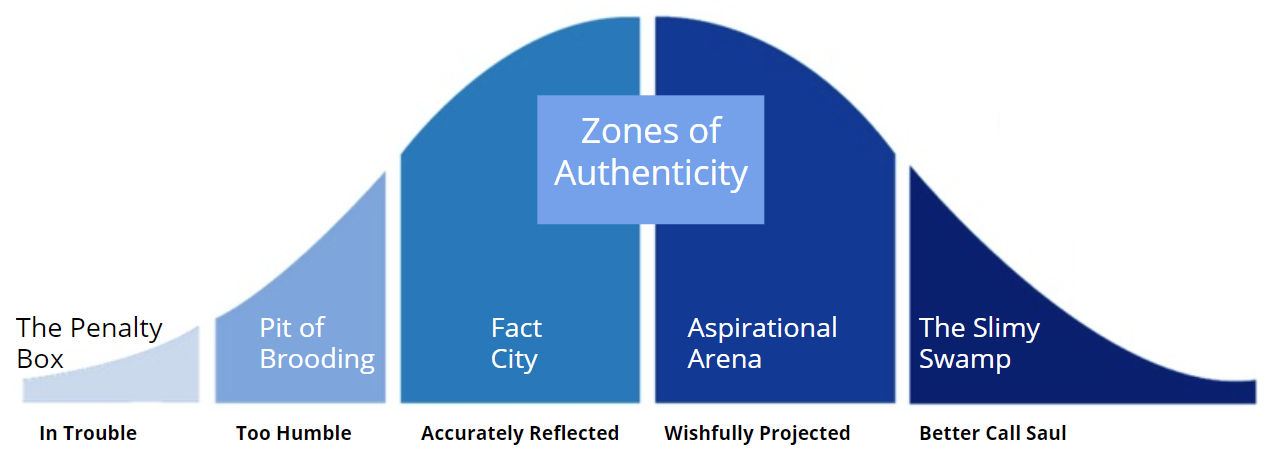The Brand Toolbox: Surveys, MTA, MMM and Digital Brand Tracking
7 minute read
What gets measured gets managed. - Peter Drucker
Building a brand is a lengthy and expensive endeavor that requires capital, discipline, and cross-functional teams that sing the same tune. Brand marketers are faced with a problem of misalignment between themselves and the company executives. They're held accountable for the performance of the brand, while at the same time, struggle to win support from the company executives.
Frustrations rise as both the marketers and the executives think the other group speaks a different language. As a result, marketers gain less financial backing and become incentivized to prioritize short-term returns. In many cases, this problem sets the brand's long-term prospects up for failure at the very start.
Tracking brand performance in an adequate manner, failing to prove it and translate it to executives (and non-technical marketer company colleagues) in a way they can clearly understand is the solution to this problem. We will cover the 4 methods you can use to track brand and demand:
- Multi Touch Attribution
- Marketing Mix Modeling
- Digital Brand Tracking
- Brand Surveys
1) Multi-Touch Attribution
The journey customers take on their way to buying something is typically long and messy. Multi-Touch Attribution acknowledges this reality, acting as a marketer's tool for navigating the chaos. It is a method of marketing measurement that attempts to quantify the value of each brand touchpoint in a customer's journey towards conversion. It gives brands a unified view of customer's journey across multiple channels and touchpoints. MTA's purpose is to tell us which touchpoints deserve the most credit for making the purchase happen.
This insight matters because we want to include more of those successful touchpoints, optimize the underperforming ones, be more effective and efficient with the way we allocate our marketing resources, and ultimately maximize the probability of customers converting.
MTA analyzes one customer's journey at a time. It covers nuanced details such as ad clicks, time spent on the brand website, opt-in for your brand's e-book, etc. MTA provides the view of results, whether they be indirect (conversion on a path to purchase), or direct (conversion as a purchase moment).
Multi-Touch Attribution: Who should use it?
Its micro-level nature makes MTA best suited for marketers who work on focused, short-term marketing tactics. Ideally, it is used to improve online customer experience (e.g. to identify trends in customers leaving your website and fix it), optimize for the customer journeys of individuals or niche groups, and to track digital ads.
A large amount of granular data makes MTA a credible source of proxy metrics, making it a perfect tool for situations when you can't directly attribute something to purchase, but still want to know whether or not your marketing is on the right path.
Multi Touch Attribution: Weaknesses
MTA collects data only from digital touchpoints, and yet customer journeys exist beyond the digital world. Watercooler chats with co-workers and brand recommendations from a friend are but a few examples of offline touchpoints, yet it's something MTA cannot track.
Another significant weakness of MTA is the emphasis it places on tangible touchpoints. Marketers won't be able to track the buyer's journey unless buyers interact with a brand in a trackable way (think 3rd party cookies and UTM codes). It doesn't take into consideration all the non-trackable ways buyers engage with the brand which nudges them towards conversion, such as a recall of an emotional ad from their childhood, noticing buyer's peers perceive the brand as a status symbol, etc.
2) Marketing Mix Modelling
Marketing Mix Modelling (MMM), is a brand measurement method that tells us which factors of our marketing mix have been most effective at impacting business outcomes, allowing us to allocate our marketing spend more precisely. MMM is used for big-picture budget setting between large channels or campaigns.
MMM works by analyzing historical brand data (e.g., collected for at least 2 years) to identify cause and effect relationships between business effects (typically sales) and dynamic factors (marketing tactics, channels, macro-economical shifts, etc.) The multi-year tracking period gives some factors the benefit of the doubt that their performance at one point in time was due to randomness. Lucky sales spikes can happen once, but if they keep happening, they're no longer lucky; these factors are clearly causing good performance. Pointing a finger at such factors is the most important insight MMM can deliver.
Marketing Mix Modelling: Who should use it?
If MTA does its tracking like a nimble cat, then MMM is a rhino. Marketing Mix Modelling is expensive to set up, requires many years of historical data for it to work, and is not flexible. However, once it's set on the right track, it will crush anything standing in its way. This is why MMM is mostly used by large companies.
On an individual level, senior marketers who work on the high-level strategy are tasked with forecasting the long term prospects of the brand find MMM to be the best tracking method. Senior executives react positively to insights produced by MMM, thanks to MMM's focus on explaining how marketing activities relate to business effects. If you or the culture of your organization fit this profile, this tool is the right one for you.
Marketing Mix Modelling: Weaknesses
Above all else, arguably the biggest weakness of MMM is that it takes years to get tracking results, something executives and shareholders simply don't have the patience and the risk appetite for. Its dependence on historical data makes MMM a poor tool for those seeking to launch a new product, or those who are innovative and disruptive by nature, such as tech startups. If you have no historical data to look back on, MMM will have diminished value.
MMM centers around business effects: sales volume, market share growth and such. This makes MMM a less than ideal tool for tracking brand effects, because business effects don't necessarily contribute to brand impact, especially in the short term.
3) Digital Brand Tracking
As people go about their daily lives, they interact with brands online. In some cases, it's straightforward like visiting their website or liking their posts on social networks. Often, the interaction indicates their view of the brand like providing an online review or commenting in a forum. Other signals are more subtle, perhaps indicating curiosity or interest, such as subscribing to their newsletter or social feeds.
Individually, these signals mean very little - but when aggregated, they become the most precise mechanism modern marketers have to assess how their brand is performing. Millions of aggregated signals tell a story about potential buyers and existing customers.
Compiling brand signals also helps explain how the brand equity contributes to the performance of ground-level marketing activities (such as individual channels, tactics, customer touchpoints, etc.) Digital brand signals work on an "always on" basis. New brand signals are always being added, flowing across the internet in real-time. This makes it easy to use brand signals as a basis to compare brand performance changes over time. BrandOps applies constant flow of brand signals to track brand health and performance.
Digital Brand Tracking: Who should use it?
Researching digital brand signals is an unrestricted form of research, anyone can use them. However, brand marketers, brand analysts and brand managers will find this method most valuable, given that brand performance is their primary interest. Digital brand signals can also be used to research brand competitors, given that digital brand signals can be found all over the internet.
Digital Brand Tracking: Weaknesses
Digital Brand Tracking does a terrific job of telling you how your brand is performing over time and relative to competitors, but it can leave the marketer wondering why. For this reason, best practice suggests that it should be used along with existing customer feedback groups, and other mechanisms that can dig into the psyche of the buyer.
4) Brand Surveys
The brand survey is an open-ended, unconstrained research method marketers use to get an answer to any specific question regarding their brand, allowing the marketer to inform any potential brand improvements. Despite their broad use case, brand surveys are still most commonly used to understand how customers perceive their brand relative to competitors. Unlike the other methods mentioned in this blog post, brand surveys are qualitative by nature.
Unlike the previous 3 methods which are used to gauge customer actions, brand surveys are used to gauge customer thoughts, feelings and beliefs - things that aren't evident when merely observing actions. Where other methods give us answers to "the how" and "the what", surveys give us answers to "the why" as well. If coupled with questions about the survey participants' demographics and firmographics, additional insight is provided on perceptions broken down by segments.
Brand Surveys: Who should use them?
Surveys are a versatile research tool, they can be used by marketers of all seniority levels and skillsets, on both granular and aggregate levels.
Surveys are most effective when used as a focused effort. In other words, surveys should be used for the sake of getting an answer to a specific question that cannot otherwise be answered through observational forms of research. The more focused survey questions are around a single topic of interest, the better insights will the survey produce.
Brand Surveys: Weaknesses
Brand surveys have three major weaknesses:
1. Respondents don't like filling out surveys. Over the years, companies have aggravated their customers through surveys - and most people refuse to fill them out. Response rates are abhorrently low.
2. Those respondents that do fill out the survey often have a conflict of interest. Typically, they're being offered a reward (money, coupons, etc.) to "just fill it out" which leads to a rapid click-through that yields incorrect responses. In other cases, survey respondents tell the researcher what they think they want to hear, cherry-pick answers that sound like a politically correct thing to say, or are affected by other cognitive biases.
3. Brand surveys are an inflexible research method. The survey can answer only a few things, with a limited number of questions. Crossing this line will decrease the likelihood of marketers getting responses to the brand survey, as it places a significant burden on survey respondents.
The verdict
As you can see, each tool has its place - and the most likely answer is a combination of multiple tracking tools. Here's what we see:
1. Digital Brand Tracking is used heavily by brands that do business on the Web. If your marketing channels are billboards, direct mail, etc. - this isn't for you. But if you're an online business - digital brand tracking is a MUST HAVE.
2. Surveys aren't going away - but due to the lack of insights, companies are being careful with the amount they spend on them and are reassessing the importance of their findings.
3. Multi-Touch Attribution (MTA) continues to be popular, but due to new privacy laws on 3rd party cookies, many feel like these solutions will only be able to deliver Last Touch Attribution, which is no better than what they already have from Google Analytics today.
4. Marketing Mix Modelling (MMM) will continue to be used by large consumer goods brands and those who advertise heavily in broadcast, and OOH, but not used heavily for digital heavy brands.
We hope this blog post has helped you answer these questions. If you're interested in reading more content on brand measurement, then we invite you to follow the BrandOps blog.
BrandOps is a unified brand tracking and measurement platform that provides marketing leaders with a continuous view of marketing performance and pinpoints areas that need improvement.


